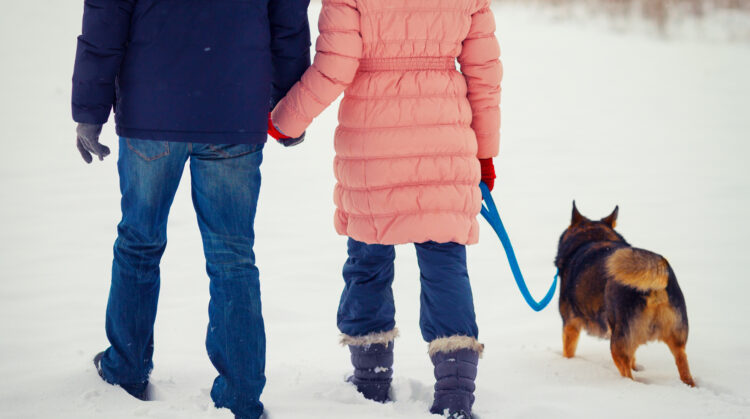
April 19, 2020
Covid-19 Closure and Opening Updates

The image of walking your dog is iconic, but it is something that must be trained into our pets. January is Walk Your Dog Month, and as many families have new puppies after the holidays we wanted to provide tips on how to leash train your dogs and offer some recommendations of some of the best equipment out there.
Walking on a leash is not natural behavior for dogs, despite how widely-established the idea is. It requires intentional and personalized training for them. The good news is, dogs are eager to learn and some can pick it up as easily as they do potty training.
There are a few things you can do to make sure you and your pet remain safe during leash training by following a few key points.
With patience, proper training, and proper gear, you and your dog will soon be a fantastic walking pair!
Although false in the context of dogs as adult dogs are often easier to train than younger canines, the old idiom states, “You can’t teach an old dog new tricks”. There is a lot of benefit to starting to leash train your pups early. Though puppies may have very short attention spans, you can start teaching key behavioral commands as early as eight weeks. Starting early teaches you and your dog a method of communication that can last the lifespan of the pup. Those key obedience commands will really help you toward building trust for leash training. Familiarizing your pup with their collars, harness, and leashes early and in a variety of settings will really help associate positive experiences with the gear.
There is a great deal of desired behaviors that go into what we imagine makes a good walking experience for us with our dog. Many of those behaviors required for an ideal walk are things that need to be learned prior to attempting to leash train, let alone experience the perfect walk. Your dog should understand basic commands such as “Sit” “Wait” “Come” “Leave It” “Step Up” or “Leash” long before you enforce ideal walking behaviors. These small commands can help make the walking experience that much easier for you both to get through without headache or injury.
Clicker training uses a unique noise to bridge the time between the dogs positive behavior and the owner’s ability to reward. This is a form of positive reinforcement meaning it associates the desired behavior with a reward. Positive reinforcement really works with dogs. Focusing on rewarding the dog’s actions really teaches them to repeat behaviors to get what they want, often a treat or a reward. Clickers can not only help make a dog more likely to repeat a desired action in the future, but aids in telling the dog what to do and what they did that it was good.
Clicker training can be especially powerful for training during walks. Using the clicker on walks, especially after you’ve established the positive tie with the sound when your dog is behaving well can really help train the dog to understand which specific actions are good. Imagine doing so on key behaviors such as walking by your side, keeping the leash loose, staying put, and coming close.
Dogs come in a variety of shapes and sizes, and so does the gear for walking them. Be sure to measure your dog carefully and consider their build, and temperament when looking at gear. Although there seems to be aisle after aisle of gear made for walking your dog and it might be daunting to research on your own, we’ve gone ahead and made a list of the ideal gear to consider when leash training most breeds.
There are dangers all around, especially in the unknown of a walk. We’ve made a list of activities and gear to steer clear of when training or walking your dog to help avoid injury to you or your pet.
Training Your Dog to Walk on a Leash – Key points and troubleshooting from The American Kennel Club.
Using Clicker Training to Communicate With Your Dog – Learn more about clicker training from The American Kennel Club.
Leave a comment